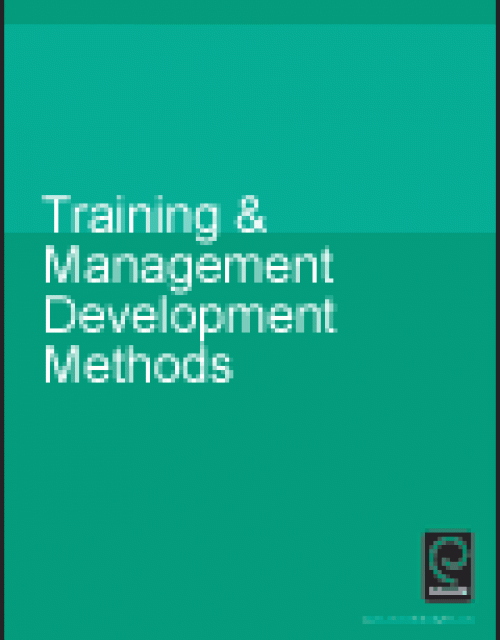Publication records
Subject(s)
Economics, politics and business environment; Technology, R&D management
Keyword(s)
Energy, electric mobility, smart cities, regulation, innovation
Secondary Title
Berliner Handbuch zur Elektromobilität
Pages
101–113
ISBN
978-3-406-64862-5
Subject(s)
Marketing
Keyword(s)
Salesforce compensation, target markets, adverse selection, screening, pooling, principal-agent models, agency theory
We show that prices and incentives recommended by the salesforce literature when targeting a profitable segment can attract unprofitable customers, particularly when salespeople have high productivity and low risk (i.e., risk aversion times uncertainty). Therefore, when customers are unidentifiable, unprofitable customers may also enter the market creating an adverse selection problem for the salespeople. By solving the moral hazard and adverse selection problems simultaneously, we show that firms can prevent the entry of unprofitable customers by “screening”. Although, screening generally requires a higher price to dissuade unprofitable customers, when firms hire salespeople, however, it requires lowering of both selling effort and the price. It also leads to a “sales trap” restricting the sales to the profitable segment to a fixed level. Screening, therefore, lowers firm profits obtained from the profitable customers. When salespeople are highly productive and risk tolerant, this drop in profit can be so high that “accommodating” unprofitable customers becomes the preferred strategy. Furthermore, the adverse selection problem intensifies and accommodation becomes more preferable when there is no moral hazard between firm and the salesperson. Behavior of unprofitable customers, therefore, must be an important consideration when targeting high-value customers and designing salesforce compensation.
View all ESMT Working Papers in the ESMT Working Paper Series here. ESMT Working Papers are also available via SSRN, RePEc, EconStor, and the German National Library (DNB).
Pages
40
ISSN (Print)
1866–3494
Subject(s)
Entrepreneurship
Keyword(s)
scientific teams, collaboration, university, invention, knowledge
We examine the effects of team structure and experience on the impact of inventions produced by scientific teams. Whereas multidisciplinary, collaborative teams have become the norm in scientific production, there are coordination costs commensurate with managing such teams. We use patent citation analysis to examine the effect of prior collaboration and patenting experience on invention impact of 282 patents granted in Human Embryonic Stem Cell (hESC) research between 1998 and 2010. Our results reveal that team experience outside the domain may be detrimental to project performance in a setting where the underlying knowledge changes. In stem cell science, we show that interdepartmental collaboration has a negative effect on invention impact. Scientific proximity between members of the team has a curvilinear relationship, suggesting that teams consisting of members with moderate proximity get the highest impact. We elaborate on these findings for theories of collaboration and coordination, and its implications for radical scientific discoveries.
© 2013 Strategic Management Society
Volume
7
Journal Pages
122–137
Subject(s)
Human resources management/organizational behavior
Keyword(s)
executive coaching
With permission of Emerald
Volume
27
Journal Pages
2.13–2.17
Subject(s)
Finance, accounting and corporate governance
Keyword(s)
syndicated loans, hold-up, lending relationships, business cycle
JEL Code(s)
G14, G21, G22, G23, G24
Volume
43
Journal Pages
175–195
Subject(s)
Human resources management/organizational behavior
Keyword(s)
distributed teamwork, webinar, executive education
With permission of Emerald
Volume
27
Journal Pages
6.11–6.17
Subject(s)
Marketing
Keyword(s)
loyalty programs, multi-vendor loyalty program, stand-alone programs, customer retention, relationship marketing, switching barriers, transaction cost economics
Volume
23
Journal Pages
305–323
Subject(s)
Management sciences, decision sciences and quantitative methods
Keyword(s)
Self-control, pro-social behavior, public good experiment, temptation
The social dilemma may contain, within the individual, a self-control conflict between urges to act selfishly and better judgment to cooperate. Examining the argument from the perspective of temptation, we pair the public good game with treatments that vary the degree to which money is abstract (merely numbers on-screen) or tangible (tokens or cash). We also include psychometric measures of self-control and impulsivity. Consistent with our hypothesis, we find in the treatments that render money more tangible a stronger positive association between cooperation and self-control—and a stronger negative association between cooperation and impulsivity. Our results shed light on the conditions under which self-control matters for cooperation.
View all ESMT Working Papers in the ESMT Working Paper Series here. ESMT Working Papers are also available via SSRN, RePEc, EconStor, and the German National Library (DNB).
Pages
38
ISSN (Print)
1866–3494
Subject(s)
Finance, accounting and corporate governance
Secondary Title
Handbook on systemic risk
Pages
247–282

